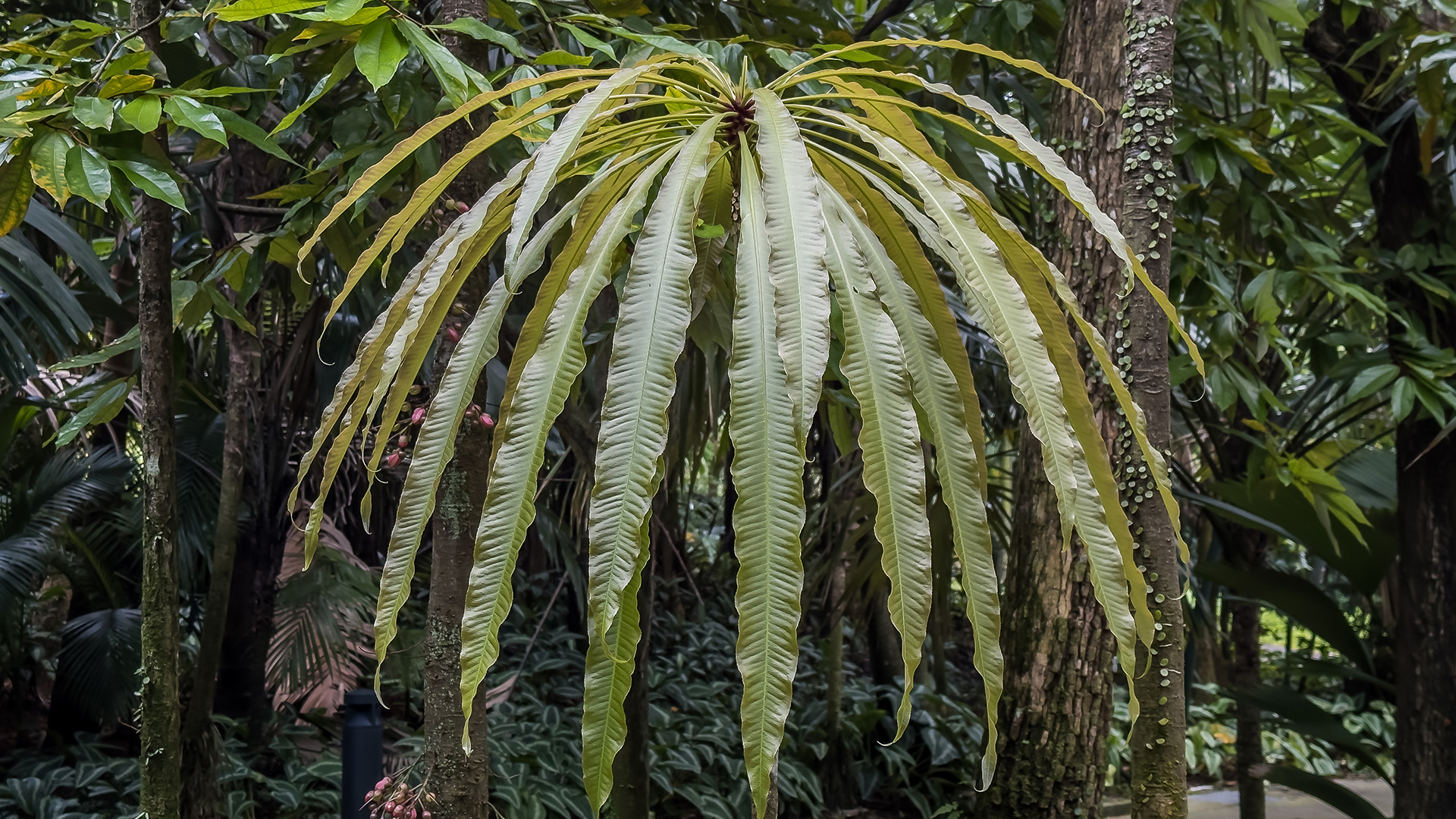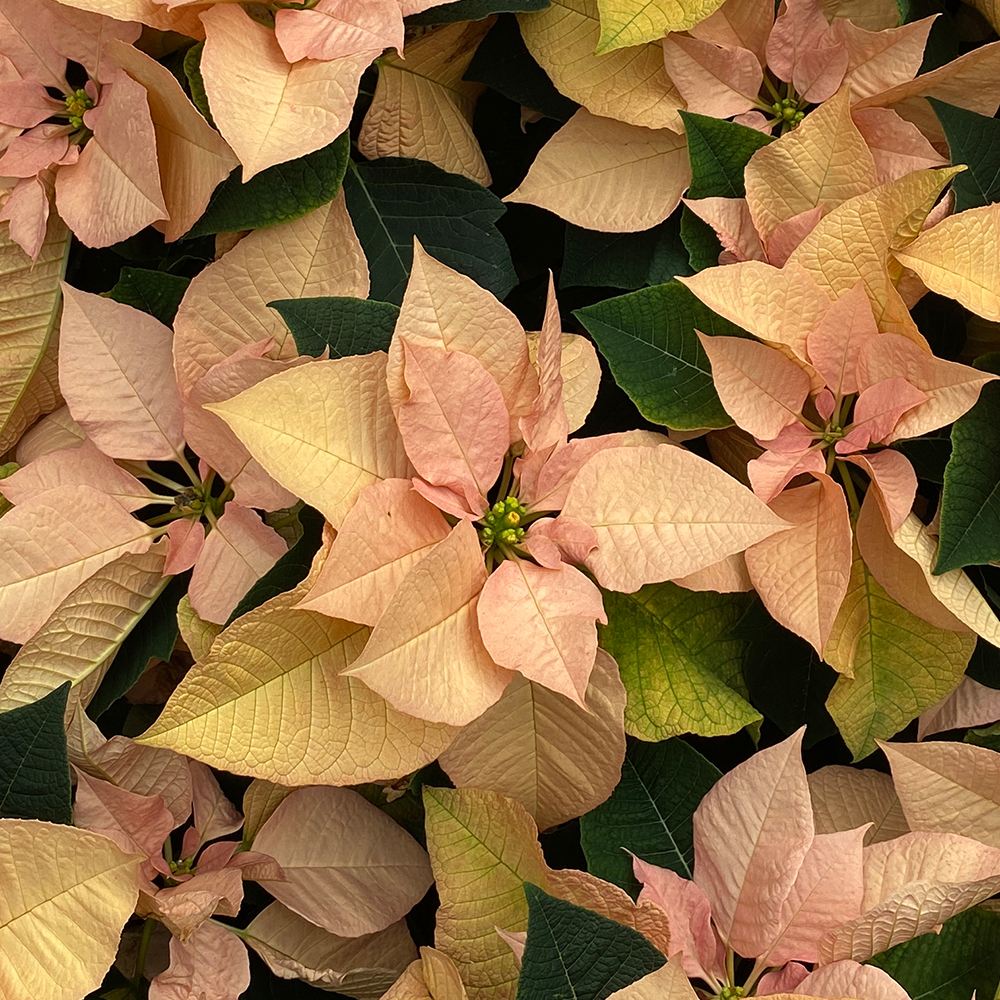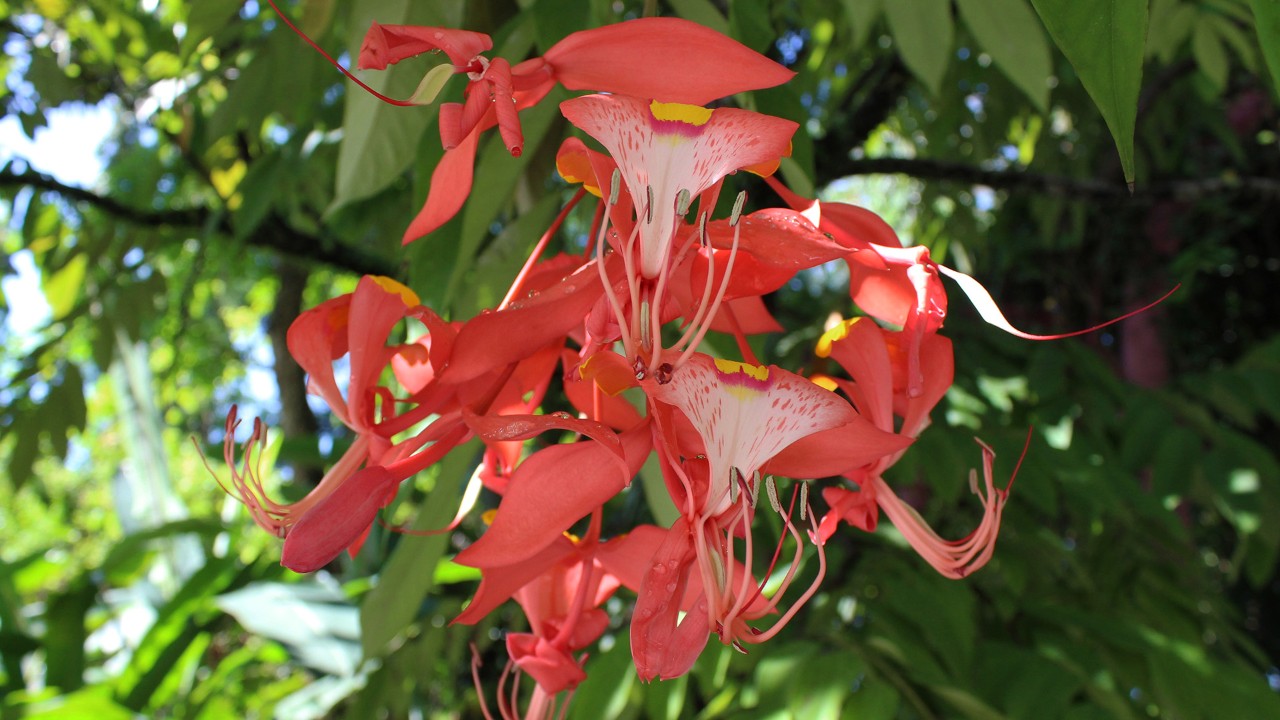
Perhaps the most beautiful among all tropical flowering trees, the Pride of Burma is best known in the botanical and horticultural world for its exotic-looking blooms and even celebrated as the ‘Queen of Flowering Trees’!
Their slender flowers are flamingo pink in colour with long, curving filaments, two horizontal petal-like bracteoles (leaf-like structures subtending a flower or inflorescence), and five petals: three large and conspicuous and two minute—the middle, upright petal being the largest, painted in white with red spots and a single yellow blotch near the tip. The flowers are arranged in a pendulous, candelabra-like inflorescence, which may hold 20-26 sequentially-developing flowers throughout its flowering period!
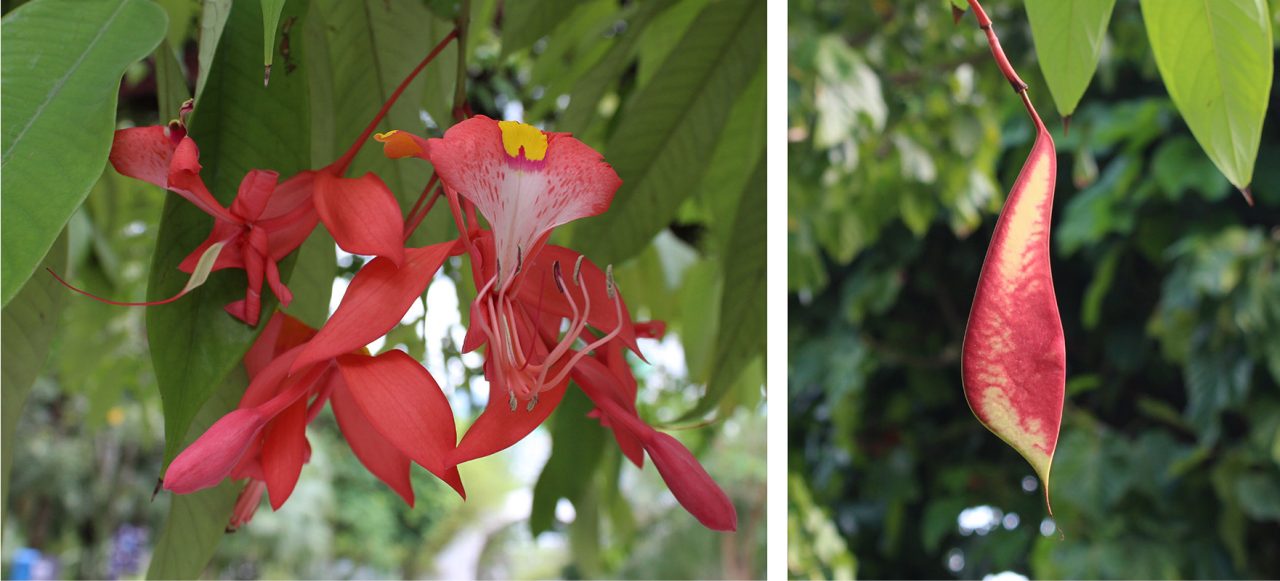 In cultivation, the flowers are rarely naturally pollinated and the development of seed pods is rare (L). The scarlet and yellow fruits that develop seldom set viable seed, probably due to the lack of suitable pollinators outside its natural habitat (R).
In cultivation, the flowers are rarely naturally pollinated and the development of seed pods is rare (L). The scarlet and yellow fruits that develop seldom set viable seed, probably due to the lack of suitable pollinators outside its natural habitat (R).
The Pride of Burma is one of the many ‘handkerchief’ trees found in the Fabaceae or bean family, such as those in the genera Brownea, Cynometra, Maniltoa and Saraca. All of them produces limp, pendulous new leaves, often in shades or pink, purple, brown, or white. The leafy ‘handkerchiefs’ of Pride of Burma emerge silvery pink before expanding into a coppery maroon, eventually developing its final, mature green shade.
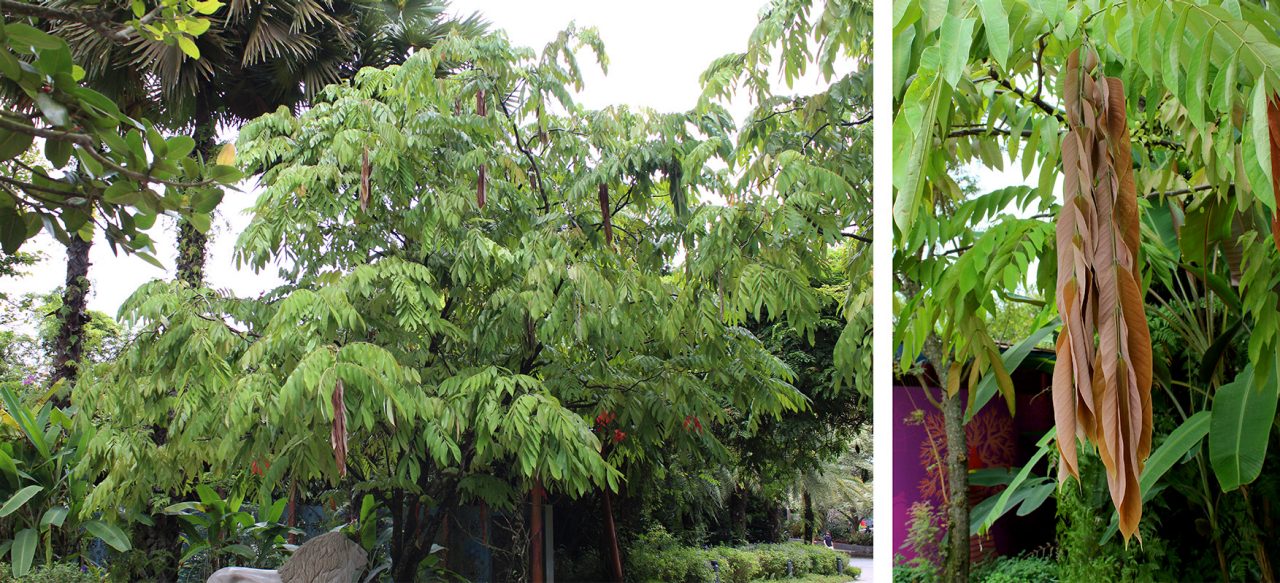 Even when not in bloom, the tree continues to pique our interest with its low-growing, wide canopy (L) and the limp, coloured tassels of new leaves (R).
Even when not in bloom, the tree continues to pique our interest with its low-growing, wide canopy (L) and the limp, coloured tassels of new leaves (R).
As the name suggests, the Pride of Burma is endemic to the monsoonal teak forests of Myanmar (previously known as Burma), where there is a distinct dry period—an environmental condition necessary to trigger blooming. Despite being a highly sought-after ornamental, this species is extremely rare, if not possibly extinct, in the wild, having only been found twice since its discovery in 1826. The scarcity of viable seeds and the difficulty in vegetation propagation further contributes to the value of this tropical flowering tree.
The next time you are making your way to the conservatories from Bayfront MRT station, do take your time to appreciate the beauty of the Pride of Burma in the Indian Garden. And who knows? You might even spot their spectacular blooms!
Written by: Hazri Boey, Senior Horticulturist (Gardens Operations)
Hazri not only surrounds himself with plants at work; he has an abundant collection at home too! Having nurtured a keen interest in nature since young, he might have gone on to become a zookeeper caring for owls or sloths had it not been for his plant identification talent!
